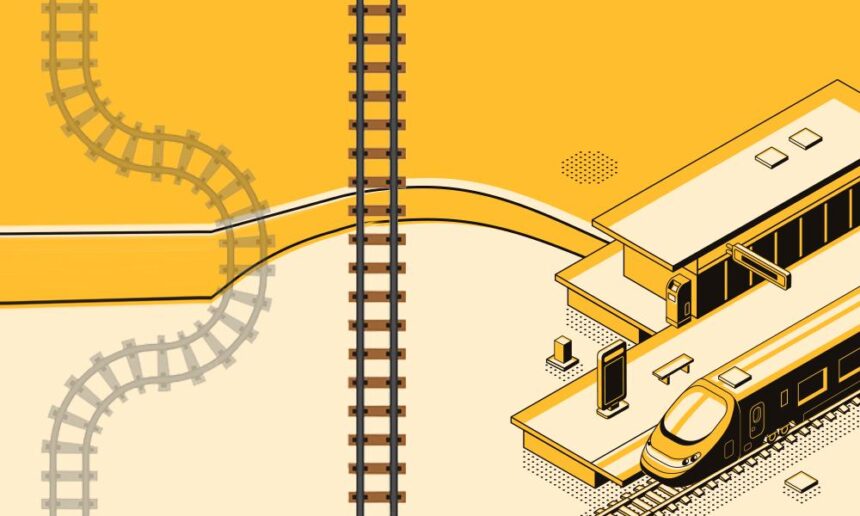The Mongolian government plans to revive the railway sector and build a 227-kilometerlong railway from Zuunbayan to Khangi within this year. This article will touch on when and how it will be built, the significance of the project, and the challenges.
The need to extend the railway
Mongolia has only one port connecting it to its southern neighbor, which accounts for 95% of its foreign trade, and two ports connecting it to its northern neighbor, which accounts for only a few percent of the trade, with one of them (Ereentsav) not in use. The only port in the south, Zamiin-Uud/Ereen Port, has been overloaded for a decade now. Especially in the last two years, our southern neighbor has closed its borders due to the pandemic, as well as Winter and Summer Olympics, leading to goods being stuck for months or years.

The government has been discussing the construction of a new port on the southern border for years, but to no avail. This time, the government of L. Oyun-Erdene decided to establish a direct contract for the Zuunbayan-Khangi railway project under the Concession Law. Yesterday (220309), the Government Procurement Agency was authorized to conclude a concession agreement for the project with a consortium of Mongolian Trans Line LLC and Mongolian Trans Logistics LLC.
The benefits of the Zuunbayan-Khangi railway
According to the technical and economic feasibility studies of the project, commissioning the Zuunbayan-Khangi / Mandal railway will reduce traffic congestion at the Zamiin-Uud-Ereen Station, and the new crossing will allow the transport of 15 million tons of freight a year to the south and 5 million tons to the north, therefore increasing Mongolia’s coal export by 50%. In addition, it will be possible to transport 25-30 million tons of coal on the Tavan Tolgoi-Gashuun Sukhait route and 15 million tons on the Nariin Sukhait route, or a total of 60 million tons per year.
The distance from Sainshand to Baotou, Inner Mongolia, will be shortened by 306 km, and transportation costs will be reduced to a quarter of what they are now. The cities of Baotou and Ordos in China have a wide range of industries, including metallurgy, railway rolling stock, construction, consumer goods, and mining trucks and mining equipment. Their plants need what Mongolia can supply at competitive prices, such as coking coal, iron ore, and fluorspar. In addition, all products exported to Mongolia from China’s inland areas will be delivered more quickly.
Land erosion, dust, noise disturbance, soil, and air pollution will decrease following the railway’s completion. Moreover, traffic accidents will be prevented, and 1600 new jobs will be created.
The Tavan Tolgoi Mining Company will be able to increase production and exports two to threefold, and Ulaanbaatar Railway will be able to double its transit traffic to 10 million tons.
New challenge
The Mongolian Russian Joint Venture Company Ulaanbaatar Railway, dating back to almost 70 years, contributed significantly to the historical development of transportation in Mongolia. However, it lags when it comes to the necessities and requirements of the new era and development, shackling the drive for development. Without alternatives, 80% of all domestic freight is carried by the Ulaanbaatar Railway. Due to the constant deficit, it is not possible to make additional investments. It has a few old locomotives that run on fossil fuels. Their passenger cars are worn out, and their roads have many single-track crossings. The main reason for this is the government’s excessive meddling with the prices of their services and their politicization of this institution. For example, it takes two or three years to only replace the chairman.
The total length of railways currently under construction and planned to be built will reach 1000 km, similar to what Ulaanbaatar Railway has now. Since the new infrastructure will be owned 100% by Mongolia with different operating costs and prices, there are going to be new challenges for the two different railways to connect and cooperate. Challenges will arise, starting with where and how to connect the railroads and the calculation of the mutual price.
Despite the persisting hardships from the past, we believe that the transportation sector will thrive as the Mongolian railway network expands.







